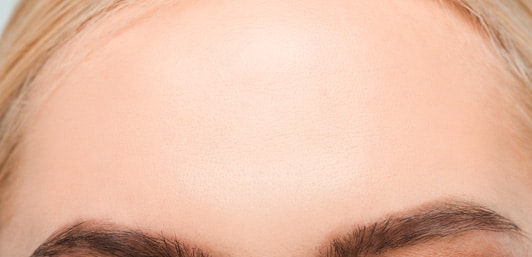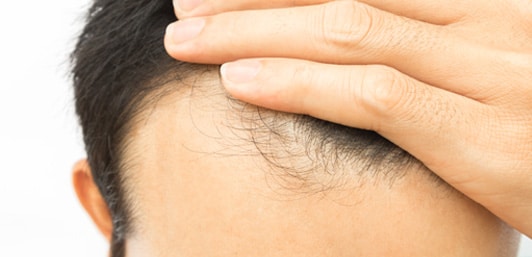Forehead Reduction / Hairline Lowering

Hairline lowering, also known as forehead reduction surgery, alters the position of your hairline. It reduces the height of the forehead and corrects normal temple recession to give it a more rounded look. The surgery can also help to balance your face’s proportions and frame your features in a more flattering way. It is performed by making an incision along the natural line of your hair and then removing a section of the skin.

The Best Candidates for Hairline Lowering

Large forehead

Naturally high hairline

No history of hair loss
The best candidates for hairline lowering are those who have a high forehead or a receding hairline. The procedure can also be beneficial for people who have a widow’s peak or other irregularities in their hairline. The procedure is not suitable for people who are pregnant or breastfeeding, as well as those who have a history of keloid scarring. If you are considering hairline lowering, you must consult a qualified surgeon to discuss your goals and concerns.
Benefits of Hairline Lowering
Hairline lowering offers many advantages to people who want to reposition their hairline further down on the forehead. The benefits include, but are not limited to:

Balances the facial features

Boosts self-esteem and confidence

Reduction in height of the forehead

Slight eyebrow lift
Risks Involved in Hairline Lowering
Like any other surgery, hairline lowering too involves some side effects. However, none of the risks are fatal. It can include:

Sensation in the scalp

Numbness around forehead

Hair Loss

Infection

Bleeding

Scarring
Procedure & Recovery
It is important to expect realistic results when opting for a hairline-lowering surgery. Other factors like the overall proportions of your face and forehead area are also considered. Typically, a hairline lowering of 2-2.5 cm can be achieved, but this mainly relies on scalp laxity.
Hairline-lowering surgery is performed under anesthesia and typically takes between one and one and a half hours to complete fully. To minimize the size of the forehead, an incision is created along the natural hairline, the excess forehead tissue is removed, and the hair is pushed forward.
The recovery period varies; however, 3 to 5 days of mild discomfort and pain are expected. The patients can resume their regular daily activities after 1-2 weeks. It is highly recommended to avoid engaging in any strenuous activities, including sports and heavy lifting.

Contact
Dr. James Wang Today

If you're interested in learning more about hairline lowering or any other cosmetic surgery procedure, contact Dr. James Wang today to schedule a consultation. Dr. Wang is a fellowship-trained plastic surgeon with years of experience helping patients achieve their desired results. He will work with you to create a custom treatment plan that meets your needs.
Other Surgical Procedures
FAQs
Hairline lowering does not have a set age requirement. Instead, individuals should base the decision to undergo this procedure on factors such as physical maturity, emotional readiness, and aesthetic goals. Generally, those under 18 will require parental consent and careful consideration by a qualified medical professional.
There are several factors to consider when determining the ideal distance between your hairline and eyebrows. The general rule is that your hairline should start about one to two finger widths above your eyebrows. However, this can vary based on your facial structure, hairline shape, and preference.
While it may seem simple, it requires careful precision and skill to get it right. It is important to approach this trend professionally and decide whether it is the right style for you. With the correct technique and knowledge, you can achieve a stunning, unique look that helps you stand out.
While every surgery has some inherent risks, forehead reduction surgery is considered safe when performed by a board-certified surgeon with extensive experience in facial plastic surgery. It’s crucial to understand that each patient’s anatomical features and medical history play a vital role in determining the safety and effectiveness of the surgery.
The answer is not always clear-cut. In some cases, insurance companies may cover forehead reduction surgery if they deem it medically necessary to address conditions such as a receding hairline due to genetics or trauma. However, if the surgery is solely for cosmetic reasons, insurance is often not likely to cover the cost.
It’s not necessary. Most hairline surgeries use a technique called follicular unit extraction (FUE), which involves removing hair follicles one by one from the back of the head and transplanting them to the hairline. It means the existing hair can be left untouched, allowing for a more natural-looking result.
The level of pain experienced during this surgery varies from patient to patient. However, most people experience mild to moderate discomfort during the first week after the procedure, but they can effectively manage it with prescribed pain medications. It is essential to follow the postoperative care instructions provided by the surgeon to ensure a smooth and speedy recovery.
It varies from person to person, but hairline-lowering results can last anywhere from 10-15 years on average.



